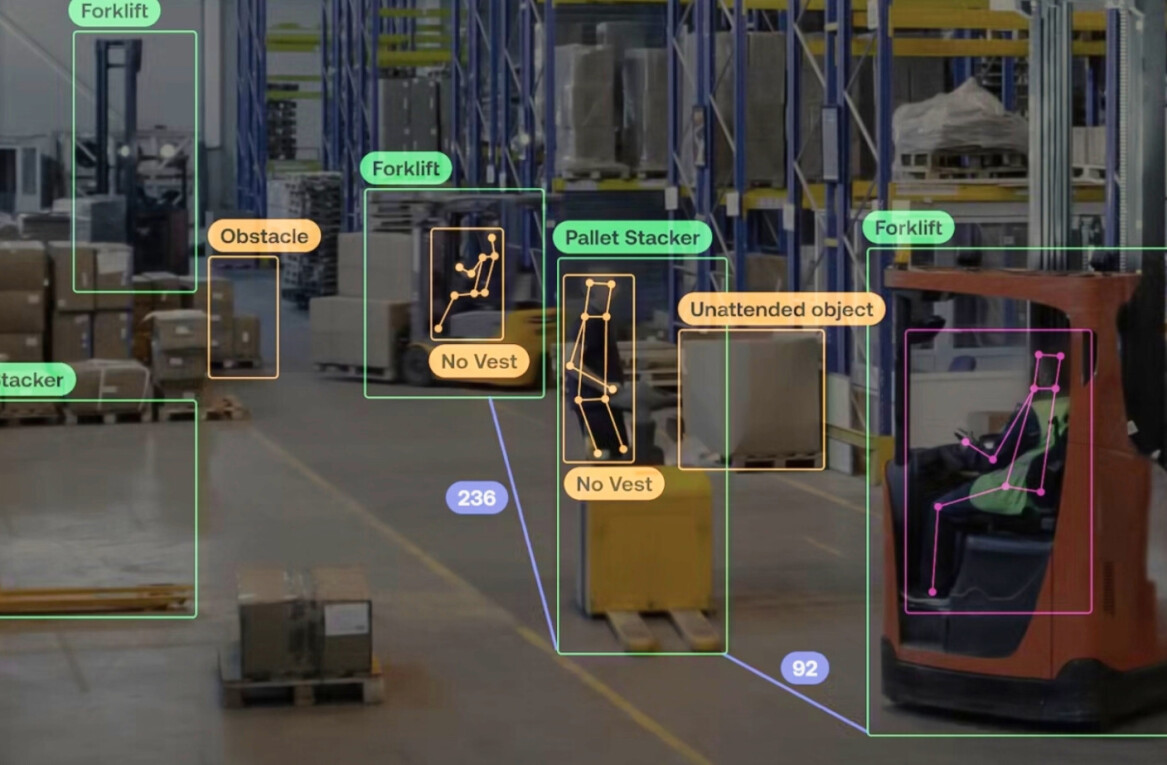
There’s been some excellent commentary on the subject of technological innovation in the past few days, and where and how it occurs. As you might expect, Silicon Valley has been the discussion’s in-room elephant. Views of its present, past, and future prominence are as diverse the people who populate it.
The difference of opinions is not cosmetic. In this post, we’re going to check in with Steve Blank, Mark Suster, and Fred Wilson, all who have written on this topic recently, and then come to a synthesis as to which, some, or all of the three are correct.
Is the Valley a pipe dream for entrepreneurs? Will the future make it as obsolete as an old American Motors’ plant? Let’s find out.
Where We Are
Mr. Blank gave a rather blunt interview to The Atlantic that is well worth reading in its entirety. If you have the minute, do so. What follows is my condensed and edited distillation of Blank’s argument.
Silicon Valley is screwed as we know it.
If I have a choice of investing in a blockbuster cancer drug that will pay me nothing for ten years, at best, whereas social media will go big in two years, what do you think I’m going to pick? If you’re a VC firm, you’re tossing out your life science division. All of that stuff is hard and the returns take forever.
VCs are only […] interested in chasing the billions on their smart phones. The golden age of Silicon Valley is over and we’re dancing on its grave. I feel bittersweet.
What Blank is saying is that as returns for investors have shortened for one technology niche (social/apps/mobile/etc), and remained long for others (science/engineering based projects), where the dollars are heading is tilted. And as the investment direction changes, Silicon Valley shifts what it builds. Hence Blank’s point that the locale is over from the perspective of what it used to be, and that the age of Facebook and its ilk is upon us.
That may sound odd, given that what the corporate (mass) media and most laypeople think of as Silicon Valley is just that at the moment: social software. However, that’s just the current instant. Let’s talk to Fred.
Fred Wilson, the thinking man’s venture capitalist, all around nice guy, and a person whose respect has been earned, wrote a fascinating article the other day under the title “The Darwinian Evolution of Startup Hubs.” We’ll get to its larger gist in a moment, but it’s time right now to chase a pedigree. Here’s how Fred views the Valley’s life, since its ‘inception:’
In my mental model of Silicon Valley, the first “tree” was Fairchild Semiconductor (founded in 1957) which begat Intel (founded 1968) which begat Apple (1976) and Oracle (1977), which begat Sun (1982), Silicon Graphics (1981), and Cisco (1984) which begat Siebel (1993) and Netscape (1994), which begat Yahoo! (1995) and eBay (1995), which begat Google (1998) and PayPal (1998), which begat YouTube (2005), Facebook (2004), and LinkedIn (2003) which begat Twitter (2006) and Zynga (2007), which begat Square (2010), Dropbox (2008), and many more.
Critical in that list is what Blank would probably call the tipping point. Observe the shift that happens between Cisco, and Netscape. There isn’t another hardware play until Square, which only half counts. Of course, Facebook and Google are huge builders of servers, but that’s not their product; it’s how they deliver it.
Blank seems to have a point, at least according to our current progression: technology in the Valley has moved from building things to shipping code that went from enterprise-focused (Siebel), to consumer-oriented, such as Facebook. And thus we reach Blank’s conclusion: the old Valley is dead, and Facebook rocks.
Looking at Wilson’s pedigree, Blank’s point about profitability cycles, from an investor standpoint, is also likely true. I’ll leave that for you to untangle, as I don’t want to bog this post down in math [I would love to run the figures – email me if you want me to – if there is enough demand, I’ll do a second post].
Now, the question becomes ‘so what?’ So what that Facebook’s IPO is a fucking flagstaff in the middle of the corpse of what the Valley used to be?
So What?
As it turns out, some folks couldn’t be more pleased about the change. This might underscore Blank’s contention, but the low cost of building a social/app/mobile product means that more little companies can be launched, creating the potential for more total successes. Even more, returns are now faster, making LPs, VC partners, and entrepreneurs happy.
Enter Mark Suster, and his 7 points as to why “It’s Morning in Venture Capital.” Again, read this whole post, please. I’m merely extracting part of its juice for my use here, and more than I feel comfortable quoting without asking you firmly to pass the original a pageview or two. Mark, take it away:
Looking ahead at the next decade I am excited by what I believe will be viewed as one of the best and most rational investment periods for venture capital due to seven discrete factors:
1. The number of startups being created has increased by an order of magnitude
2. The number of venture capital funds has shrunk by two-thirds
3. There are 20x more consumers online
4. We’re online all the time and at high speed
5. Mobility really changes everything
6. Everybody is now payment ready
7. We’re all socially linked
Of course, Mark Suster is based in LA. Does that change the efficacy of his points in regards to what the Valley is going to build? No. The reason why he has decided to live in the worst city in the United States is beyond comprehension, but his points as to why VCs may be excited about the next ten years are unaffected.
Note, however, how he describes the market: online, payment ready, and at high speeds. In short, Suster is looking at the market through the lens that Blank outlined as something other than what the Valley used to be.
Another pre-rebuttal: haven’t I merely selected a venture capitalist that works in the social/mobile/app space, and held him up as a symbol of the whole VC market? Isn’t that a bit, well, bullshit? Sure, but read his points again, and compare them with Blank’s argument. The dollars will flow, as Blank states, to where the opportunity is fastest, and perhaps, biggest, which is what Suster outlines. The two combined paint a pretty simple picture.
Now, all of this is most dangerous if we lose, entirely, the old tech. The life sciences. The next Cisco. Biotech. That sort of thing. Is there a point of no return? I wouldn’t think so, but over time expertises shift, and if we promote and feed venture capitalists of only one flavor in the Valley, it will take some time to undo.
But where did all that physical tech come from? We have to return to Fred Wilson for an answer:
The transistor was invented in the late 1940s and by 1958 we had commercial startups working on the technology. So if this revolution is anything like the last, the next big thing will be invented any day now and within a decade or two we will be on to the next technology revolution.
That’s where Fairchild started from, eventually begetting Square, in a way. Is it right to say, then, that we are merely moving forward, that each progression is the next progression? Semiconductor tech replaced (roll with that assertion, please) something before it, right? So isn’t the bumping of other science technology from the VC roles, taking those funds and applying them to social, just simple evolution?
The Other Tech
Yes, it is. The problem with that, in a pure sense, is that we still use all that old stuff, in better forms. The companies that came after have hoovered up the cash, but we still need innovation at the thicker branches of that tech tree that the new stuff has grown from.
But that doesn’t mean that such work has to take place in the Valley itself, incidentally. As is obvious in market dynamics, especially when contemplating the rules of market demand and investor supply and entrepreneur ability under a globalized economic model, it will come back, just somewhere else. By that I mean, we still need someone to invest in that ‘other’ stuff, and that eventually, someone will. As we have noted, however, if we hyperfocus on the Valley, we’ll be a damn proverbial one trick pony.
That means ceding huge slices of potential innovation and profits to other locales, and likely, other countries.
Science is not dead in the United States. As Blank notes in that interview that we have now pilfered far more than is polite:
I teach science and engineering. I see my students trying to commercialize really hard stuff. Thank God we have small business research grants from the federal government, otherwise the Chinese would just grab them.
In short, the US government continues to pump money into certain technology firms. It doesn’t always work (see: Solyndra), but sometimes it does (SpaceX, Tesla).
Woah, I hear you having that complaint out loud, so I’ll tend to it now. How can we kvetch about the Valley, when SpaceX and Tesla are born from PayPal seed money and are Silicon Valley companies? An excellent point. My response: It’s impossible to draw big trends from individuals. Musk is an anomaly on a scale that we haven’t seen since Jobs and Gates, period. What he is doing is almost beyond comprehension. His double life between a space company and a car company makes Jack’s Twitter and Square dance look like a regular job (in my humble opinion, of course, much love, Jack).
But the market is Darwinian, and thus someone else will invest dollars in hard tech. If we depend on the US government to make those investments, alone, in the States, we are asking to lose that race.
What All This Means
Still, it’s not all bad. If the rest of the world wants to make the longer, harder bets, and we can make all the fast, simpler ones, don’t we win in the end? That comes down to a question of foundations. Do the companies that are currently the darlings of the Valley build foundations? It’s an open question.
Instagram, instead of building a long-term company that could have trained oodles of top talent for the future, will likely remain a smaller affair, later folded into the giant that ate it out of fear. Fred speaks on the phenomena:
If you drill down a bit deeper, you see that the founders, investors and early employees generate a tremendous amount of wealth from these big successes. The later employees don’t make as much wealth but they do learn a ton and make enough money that they don’t need to work for someone else and so they strike out on their own and are often funded by the folks who made the big money in the prior startup. That’s how the seed drops from the tree and starts a new tree growing. This continues on and on and on.
But what happens when you don’t have that long maturation process, with the top dogs essentially curating the crop of people that they are going to invest in? I’m not sure, but I don’t think that it would lead to an improvement of how things have worked. At the same time, calling down what is changing the present as lackluster simply because it doesn’t mirror the past is a fool’s errand. You can make up your own mind here.
Still, the idea of ‘from whence’ is important. As Fred Wilson demonstrated, it’s how we go to where we are today. This is no idle question. It could be an existential one.
Therefore the future, as you might have expected, is a bit unclear. But the idea that technology and the Valley is constricting to a single niche, or corporate variety, I think is troubling. If we all chase the same goose, most of us lose, and only one animal is encaged. All bits and bytes and pieces of motherboard in a single basket is hardly a good diversification strategy.
Then again, the Darwinian model has given us the fastest technological change ever witnessed by man. There’s something to that.
What we need is for someone to write a book that traces technology from Manhattan Project, to today. That would likely provide us with the context that we need to properly decide if we are making wise choices for the future.
Fred hits this perfectly:
But of course, all of this is conjecture. History doesn’t repeat itself. But it does rhyme. That comes from Samuel Clemens (aka Mark Twain). One of my favorite people ever.
Mine too, Fred.
Get the TNW newsletter
Get the most important tech news in your inbox each week.





